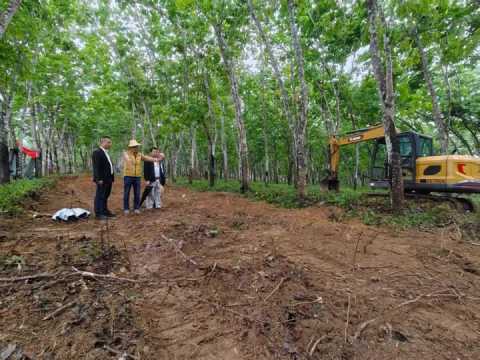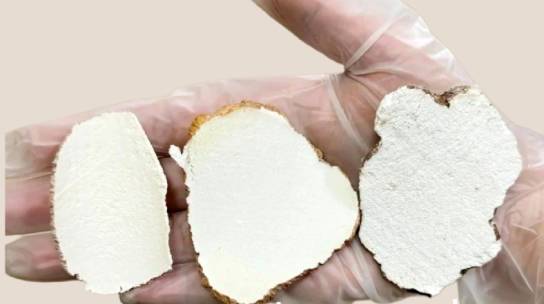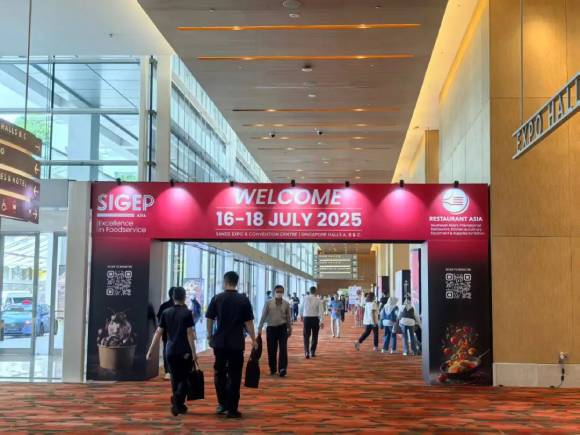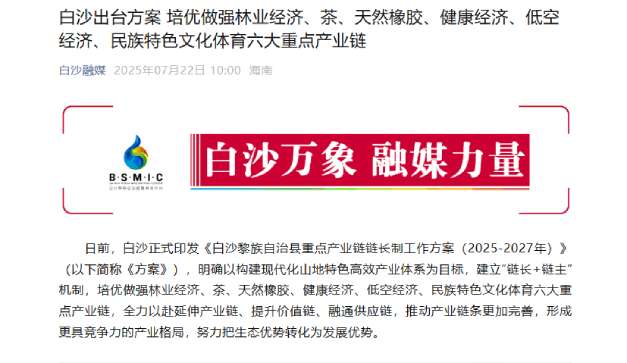Tiger milk mushroom cultivation in Hainan Chengmai
Tiger Milk Mushroom Cultivation On March 31, the 2025 demonstration project for medicinal and edible fungi cultivation under rubber forests began in Renxing Town, Chengmai County, Hainan. This initiative marks a significant step in Chengmai County’s efforts to promote integrated rural development and explore new paths toward agricultural modernization.

Focusing on cultivating medicinal and edible fungi under rubber trees, Renxing Town has partnered with Company to develop over 3,000 mu (approximately 494 acres) of planting area. The project innovatively combines rubber forests with mushroom cultivation through a dedicated spawn production facility (with daily output of 30,000 bags) to ensure steady supply, achieving “dual harvests from single land” through efficient circular agricultural practices. On the opening day, the mushroom spawn workshop in Shicun Village was already under active construction, expected to drive large-scale economic development across the entire town’s forested areas.

Looking ahead, Chengmai will pursue a “modern agricultural complex” strategy by integrating rural and plantation economies. Through this approach, previously underutilized spaces beneath rubber trees will become “profit-generating fertile lands.” The model will expand to more rubber plantations across additional towns while cultivating specialty agricultural brands, injecting fresh momentum into rural revitalization.
About Tiger Milk Mushroom Cultivation – 2023 Report
With forest coverage reaching 88% and approximately 220,000 mu (36,163 acres) of rubber plantations, Renxing Town has broken away from single-crop economic models by developing customized understory agriculture. On August 14, media representatives participating in the 2023 “Striving for Hainan Free Trade Port: Writing New Chapters” national media event visited the Renxing Town mushroom cultivation base. This 468-mu (77-acre) facility provides 30,000 temporary jobs annually, enabling local residents to earn income without leaving their hometown.
During the 2023 national media tour of Renxing Town’s mushroom cultivation base, journalists observed dense rubber plantations with expansive white mushroom growing sheds scattered beneath the trees. Inside the sheds, scattered tiger milk mushroom could be seen emerging from the soil. According to base managers, these were leftover tiger milk mushrooms from recent harvests, with preparations already underway for the next planting cycle.

On August 14, 2023, media representatives from the national media tour visited Renxing Town’s mushroom cultivation base.

To diversify its rubber-focused economy, Renxing Town partnered with Hainan Agricultural Development Co., Ltd. in 2022 to complete Phase I of the mushroom cultivation project. The first phase included 68 mu (11.2 acres) of mushroom sheds, a sorting center, cold storage facility, and drying room. In 2023, expansion added 400 mu (65.9 acres) of mushroom cultivation space beneath rubber trees, establishing a distinctive agricultural brand. This collaboration involves the town government, village committees, and enterprise partners. Village committees contribute through “capital + land” investments, receiving “annual fixed principal repayment + fixed dividends.” Leveraging technical expertise from both the Tropical Crop Research Institute and the company’s professional team, the project achieves integrated production, processing, and sales of specialty mushrooms.

Currently operational, the first phase and expanded section of Renxing Town’s mushroom cultivation project spans 468 mu (77 acres) of rubber forests. The base leverages Hainan’s unique climate and off-season advantages to cultivate tiger milk mushroom and red-belted bamboo mushrooms.
Mr. Yan Xianhong, head of Hainan Agricultural Development Co., Ltd., explained that this forest-based mushroom cultivation model delivers significant economic, social, and environmental benefits. Each mu (0.16 acres) of rubber forest can accommodate 3,500 mushroom bags at a cost of approximately RMB 5.5 per bag. Each bag produces over 110 grams of tiger milk lingzhi, currently selling at RMB 90 per kilogram, generating single harvest profits of around RMB 15,000 and annual profits of RMB 30,000 (two harvests). Tiger milk mushroom yield three harvests annually with profits reaching RMB 50,000 per mu yearly, while red-belted bamboo mushrooms generate annual profits of RMB 45,000 per mu through single-season planting.
Establishing a 500-mu (82-acre) medicinal and edible fungus cultivation base generates RMB 200,000 annually in land rental income and provides no fewer than 30,000 temporary job opportunities yearly, with total labor compensation exceeding RMB 4 million.

The “forest-fungus” integrated cultivation model enriches soil microbial content and organic matter, effectively improving soil quality and promoting rubber tree growth, thus enhancing rubber production efficiency. The mushroom spawn production facility embraces the concept of “scientific development and waste utilization,” recycling agricultural byproducts like straw, sawdust, and corn cobs as raw materials, effectively addressing local agricultural waste management challenges and promoting sustainable circular agriculture.
Mr. Yan Xianhong added that to expand mushroom cultivation and benefit more people, the company plans to invest RMB 20 million by the end of 2023 to develop an additional 570 mu (94 acres), creating a provincial-level demonstration base for tropical forest-fungus integrated agriculture. In 2024, RMB 15 million will be allocated to establish a mushroom spawn production workshop with daily capacity of 10,000 bags, employing 15 permanent workers.
Ms. Liu Xijing from Yunnan News Network remarked, “I never imagined that developing understory economy could generate such impressive returns while creating abundant employment opportunities for local residents to earn income right in their hometown.”

Though rich in forest resources, Renxing Town’s remote location and limited transportation have historically constrained economic development. By transforming these challenges into competitive advantages through customized green development strategies, the town has adopted an innovative partnership model with a “pilot-first, then expand” approach. This successful demonstration project encourages wider mushroom cultivation adoption among villagers, effectively boosting local employment and income levels while driving rural revitalization.






Этот проект действительно впечатляет своим масштабом и инновационным подходом. Использование подлеска каучуковых деревьев для выращивания грибов — это умное решение, которое не только повышает доходность, но и способствует устойчивому развитию. Очень радует, что это создает тысячи рабочих мест для местных жителей, позволяя им оставаться в родном городе. Идея сельскохозяйственного комплекса, который объединяет различные отрасли, выглядит многообещающе. Однако интересно, учитывались ли экологические аспекты при таком интенсивном использовании земли? Как это повлияет на почву и экосистему в долгосрочной перспективе? Хотелось бы узнать больше о том, как планируется поддерживать баланс между сельским хозяйством и природой.
Great – I should definitely pronounce, impressed with your site. I had no trouble navigating through all tabs and related information ended up being truly easy to do to access. I recently found what I hoped for before you know it at all. Quite unusual. Is likely to appreciate it for those who add forums or something, web site theme . a tones way for your customer to communicate. Excellent task..